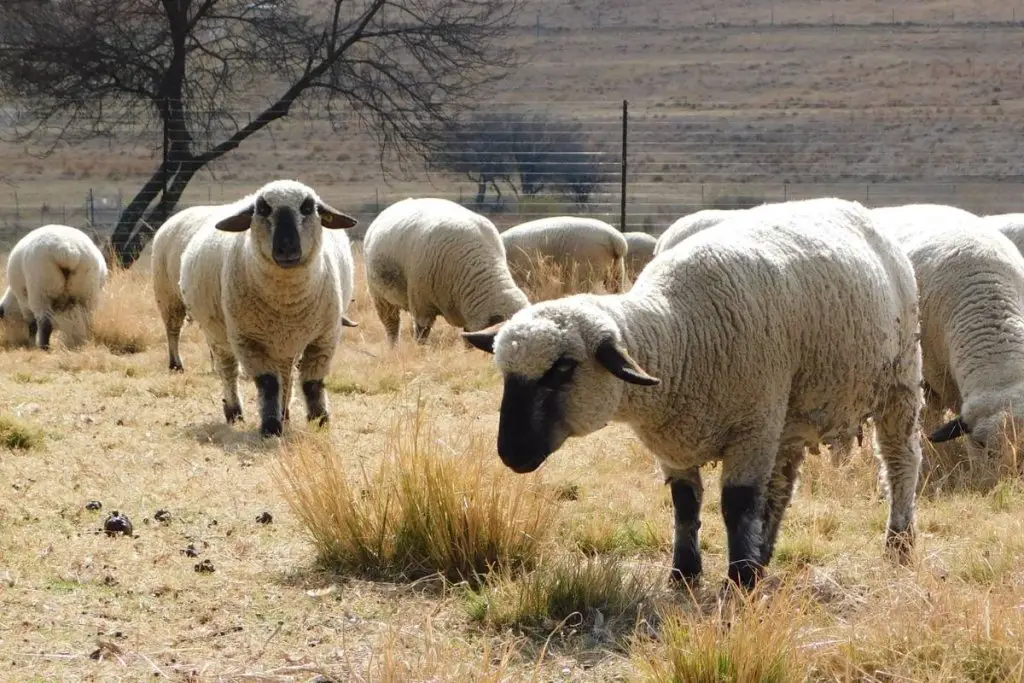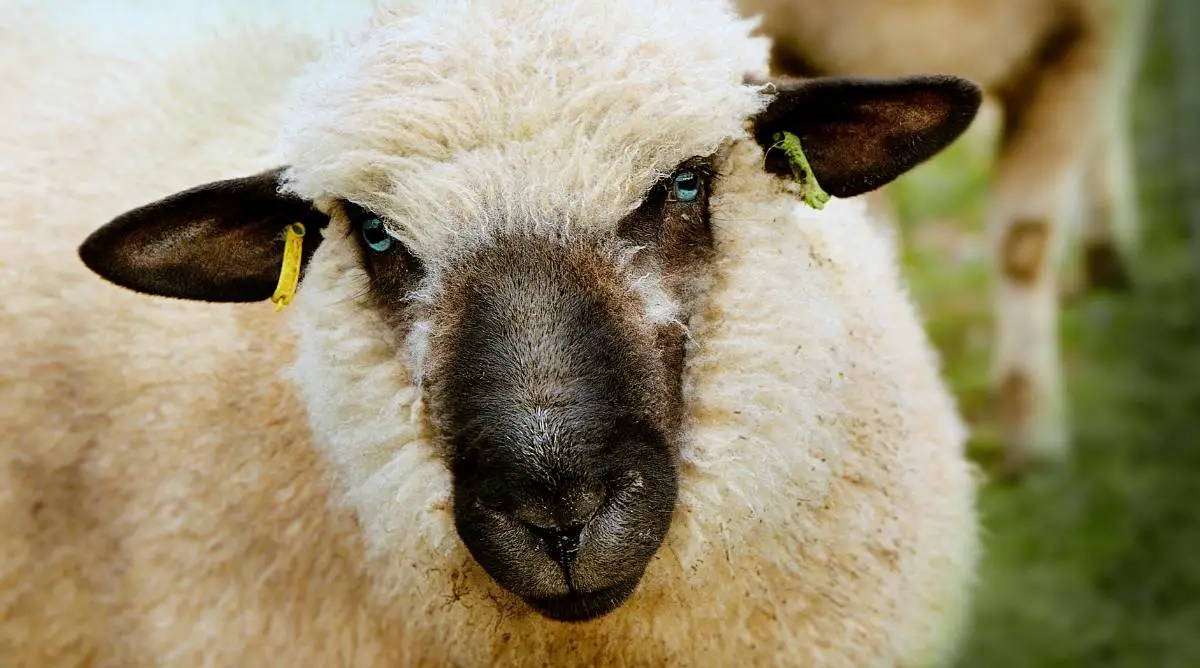Hampshire sheep are a large, muscled breed known as "the oxen of the sheep world." The breed, originating in Hampshire, England, is officially known as Hampshire Down. Hampshire sheep are known for producing lambs with a fast growth rate.
Table of Contents
Hampshire Sheep Breed Origin
Hampshire Sheep evolved from the natural breeding of various types of sheep in Hampshire County, England, including the Southdown, Willshire Horn, Berkshire Knot, and Old Hampshire.
Breeders developed the Hampshire sheep into a breed with early-maturing lambs and a fast growth rate, helping lamb and mutton become less expensive and more easily accessible.
- John Twynam was the first farmer to breed the sheep, combining his Hampshire flock with a Cotswold ram.
- William Humphrey created a more compact sheep by introducing two large Southdown rams to his Hampshire flock. Southdown sheep have better meat and wool, the capacity to mature quickly, and are simple to fatten. The resulting mutton from breeding Southdown and Hampshire sheep had a considerable amount of fat and was juicy and flavorful.
The Hampshire Down Sheep Breeder’s Association was founded in Salisbury, England, in 1889. The American Hampshire Down Sheep Association was also organized in 1889.
Hampshire Sheep Breed Characteristics

| Characteristics | Description |
| Origin | Hampshire County, England |
| Appearance | Large sheep with dense, muscled bodies. Typically are polled (hornless). Dark face and legs and long, floppy ears. Most Hampshire sheep have white wool. |
| Wool | Tough and of medium quality. Ewes produce 2.7–4.5 kilograms of fleece. Micron count of 25–33. Yield between 50-605. Staple length 2-3.5 inches. Spinning count is between 46-58. |
| Weight | 275 pounds (Rams), 200 pounds (Ewes) |
| Meat | Known for its quality, flavor, and high level of fat and marbling. Flavor is sweet and delicate. |
| Environment | Does well in environments similar to its origin of Hampshire County, England. Resilient breed that thrives around the world. |
| Common uses | Meat |
| Fertility | Long breeding season. Ewes are prolific. |
Hampshire sheep are a large breed with dense, blocky bodies and robust muscling.
Rams weigh around 275 pounds, while ewes weigh around 200 pounds.
Rams and ewes typically are polled (hornless), with a dark face and legs and long, floppy ears. Their faces are open. Most Hampshire sheep are white, although some exist in other colors.
Ewes produce lambs with an above-average growth rate and carcass quality.
Hampshire Down lamb is known for its quality, flavor, and high level of fat and marbling, giving a sweetness to the meat.
Hampshire Sheep Wool
Hampshire sheep wool is tough and of medium quality. Hampshires are primarily meat sheep, and their wool isn’t of typical production quality.
Mature Hampshire ewes produce 2.7–4.5 kilograms of fleece with a micron count of 25–33. The yield is between 50 and 60 percent, and the fleece staple length ranges from 2-3.5 inches. The spinning count of the wool is between 46-58.
Hampshire Sheep Breed Facts
- Hampshire sheep are resilient.
- They have a long breeding season. The ewes often give many births.
- They can appear threatening because of their large size. But they tend to be docile and nonaggressive.
- Hampshire sheep have high-grade mutton, with a lean carcass and heavy bones.
- Hampshire sheep are able to mature early and fatten readily. They tend to be more profitable with less feeding than many breeds.
- Hampshires are valuable terminal sires for market lambs because of their fast growth rate and carcass profile.
- Hampshire sheep can convert forage into meat and fiber more efficiently than most breeds.
- They are adaptable to a variety of regions.
- Hampshire sheep are a popular breed with 4H and FFA projects.

